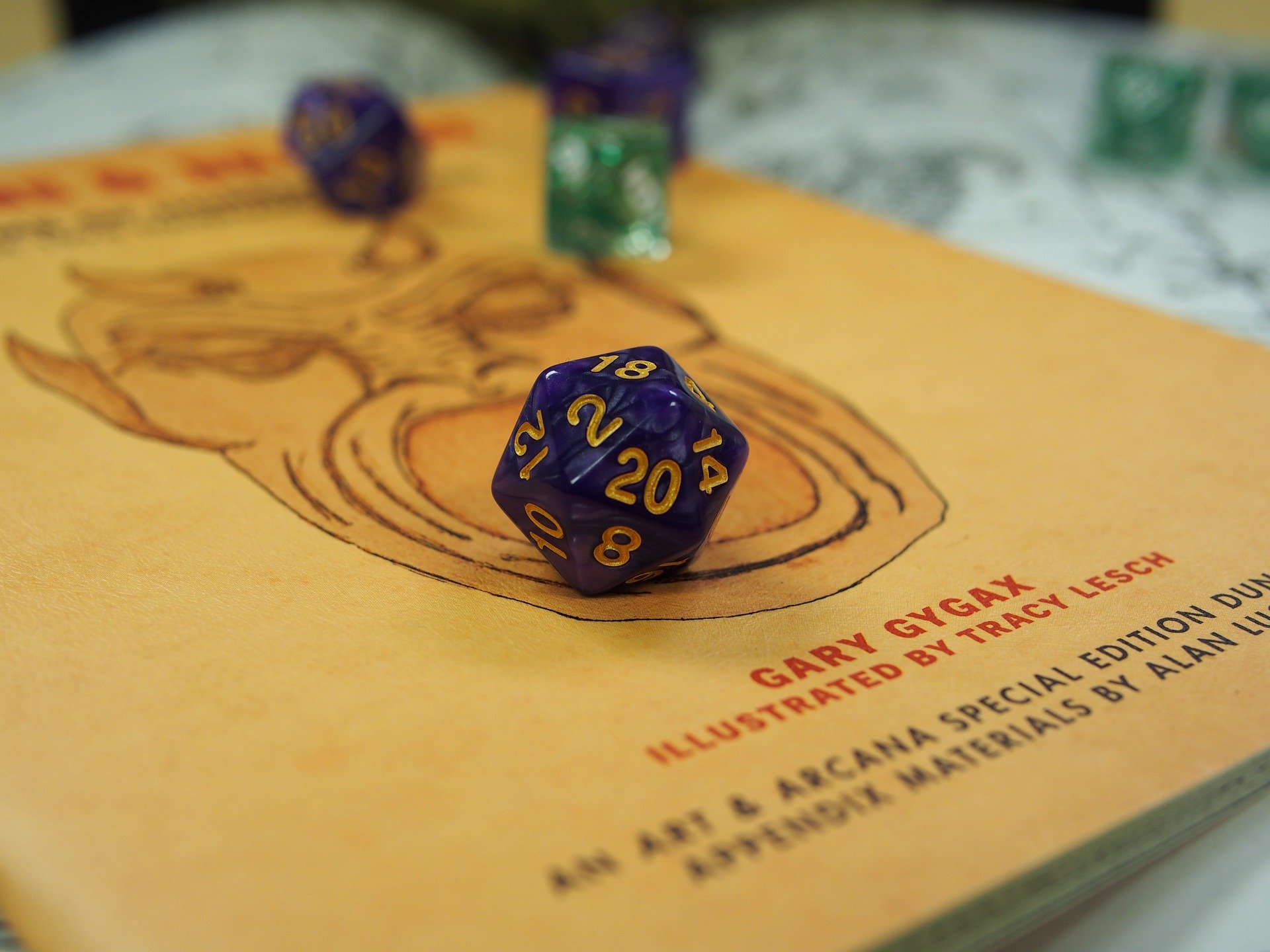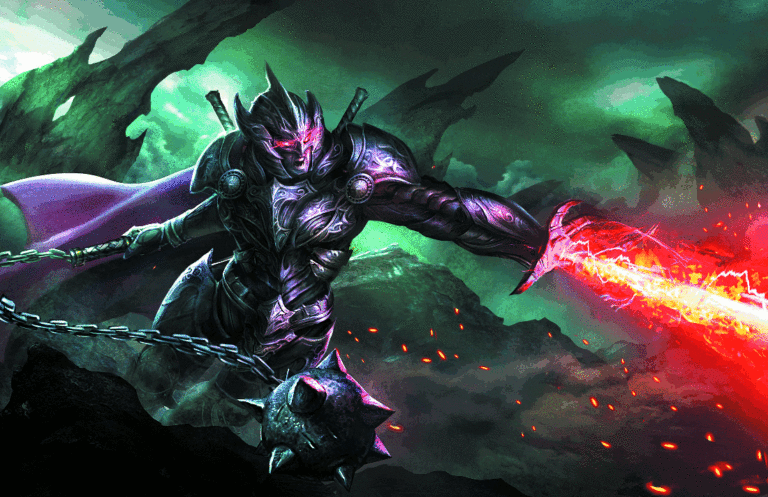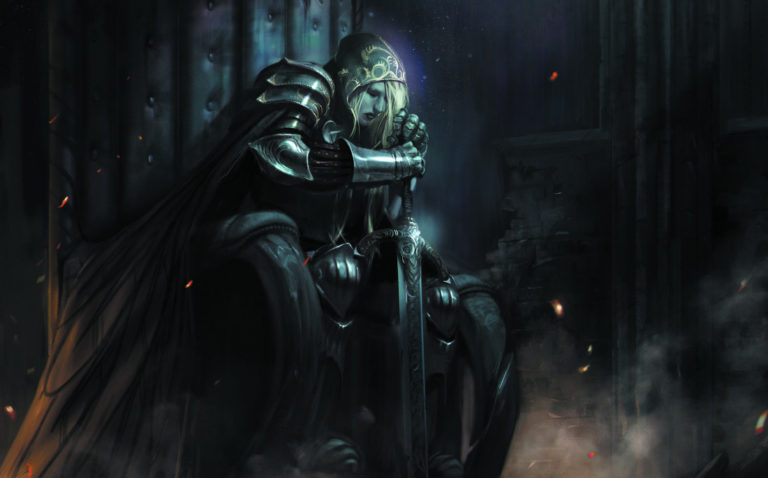Circle of the Shepherd 5E Guide | Rules, Tips, Builds, and More
Xanather’s Guide to Everything, similar to the player’s guide, introduced two Druid circles – both of them have something to do with the Fey. If you wish to learn from them, check out the Circle of Dreams. If you wish to protect them, you’ve come to the right place. The Circle of the Shepherd is centered around defending the natural world… That is, fey and beasts that can’t defend themselves. You’re a warden, preventing monsters and hunters alike from killing nature indiscriminately, and even protecting sacred fey realms. Occasionally, that means joining with adventurers to oppose Liches, or other forces that may threaten everyone. Does that make them good at adventuring, or as useful as a simple farmer? Read on, in our Circle of the Shepherd 5E Guide.
Table of Contents
Lead Your Flock: Circle of the Shepherd
Unlike the flavor of this class, the Shepherd Circle is a summoner of fey and beasts. So, you defend nature by tossing nature at your enemies. That’s hilarious.

You are a backline spellcaster at heart, using summons to bodyblock and direct enemies. The Shepherd Circle does have other support abilities to help your allies, but those abilities are only once per rest.
Speech of the Woods
To start, you get a wonderfully flavorful ability at level 2, when you take the circle.
You learn to speak, read, and write Sylvan. In addition, beasts can understand your speech, and you gain the ability to decipher their noises and motions. Most beasts lack the intelligence to convey or understand sophisticated concepts, but a friendly beast could relay what it has seen or heard in the recent past. This ability doesn’t grant you any special friendship with beasts, though you can combine this ability with gifts to curry favor with them as you would with any nonplayer character.
The language of Sylvan is the language of the Fey. Most Fey learn Sylvan, so you get to talk with almost all Fey creatures. You also get to talk with a non-insignificant percentage of Elves.
Sylvan is actually one of the best languages to grab, since most Fey can be talked out of combat. Not bad at all!
However, in a much more cool twist, you can also talk and understand beasts. Sure, casual conversation will probably devolve into your DM telling you some poop jokes. But, if a beast saw a bad guy running down a road and using magic to make two trails, you’ll be at a huge advantage! This gives your party another major information ability that would normally require a level 1 ritual to be cast – this is a permanent Speak with Animals.
And it lets you actively make friends with beasts, which is slightly better than Speak with Animals. Make the Ranger’s animal companion into your best buddy and play pranks! Or, get a faithful animal ally who can help you scout or get money in town. The options are endless!
Spirit Totem
Your actual level 2 ability is a once-per-rest spirit that you can summon on the ground.
As a bonus action, you can magically summon an incorporeal spirit to a point you can see within 60 feet of you. The spirit creates an aura in a 30-foot radius around that point. It counts as neither a creature nor an object, though it has the spectral appearance of the creature it represents. As a bonus action, you can move the spirit up to 60 feet to a point you can see.
The spirit persists for 1 minute.
By default, this plops a spirit down that has a Fireball-esque range. It also really makes use of your Bonus Action on any given combat that you decide to use it. It’s a shame this doesn’t have more than one use between rests!
Below is a brief description of each spirit.
- Bear Spirit: A tanky spirit, giving temp hitpoints and advantage on Strength stuff. If you summon a beast that’s good at grappling, this will help it a lot, especially in the late game.
- Hawk Spirit: A spirit dedicated to perception, but with the additional option of allowing you to grant advantage on attack rolls. Probably the best spirit by default, especially if you have a Rogue in the party that can’t get Sneak Attack in any other way.
- Unicorn Spirit: A combination of healing and anti-invisibility. It’s kind of weird, since the Hawk Spirit gave advantage on Perception checks… but whatever! In this aura, you can heal everyone for your Druid level when spending any spell slot. Not awful for out-of-combat healing, if you really need to spend your Spirit before a short rest.
This is a good ability that gets better at level 10. It’s not exactly spectacular; the best totem is either a max of 25 temp hitpoints, or advantage on a single attack per turn. Neither is awful!
Default to Hawk Spirit unless you have a specific plan with Bear. Unicorn Spirit is only good as a way to use healing spell slots right before a rest. Do remember that Unicorn Spirit will work for your Goodberry or Healing Spirit spells.
Mighty Summoner
Mighty Summoner is your first summoner ability, and starts a trend that’ll last for the rest of your class.
At 6th level, beasts and fey that you conjure are more resilient than normal. Any beast or fey summoned or created by a spell that you cast gains two benefits:
- The creature appears with more hit points than normal: 2 extra hit points per Hit Die it has.
- The damage from its natural weapons is considered magical for the purpose of overcoming immunity and resistance to nonmagical attacks and damage.
These are fantastic buffs, thankfully!
The first benefit kind of doesn’t matter. Most Beasts have absolutely insane health, and most Fey are either constantly invisible or don’t have too many hit dice. Still, hit dice are significantly better than CR-based health. For example, a Dire Wolf (a CR 1 Beast), gets 5 hit dice. You’ll have to really make sure you check on your summons’ hit dice, since that’s a significant boost in HP; it’s like you added +4 to it’s Con score! That’s… fine.
More important is the magical natural attacks. For a lot of beasts, combat really starts sucking at level 6 or so. That’s when magical weapons are expected, so more and more creatures have resistances to nonmagical stuff. This lets your summons (which, even CR 2 summons deal stupid high damage!) keep up with magical weapons during those combats.
You’ll still want to put your beast summons in the best position to fight. Try to get Advantage where you can, surround enemies, etc. Then, tear them apart with really high health bars, and they can’t hide behind their magical weapon preference!
Fey don’t care that much about this buff, but Beasts are a bit more useful to summon (in most cases!). They’ll still benefit from these, but for now, just focus on your Summoned Good Boys and Girls.
Guardian Spirit
Up next, you get some pretty okay health buffers for your summons.
Beginning at 10th level, your Spirit Totem safeguards the beasts and fey that you call forth with your magic. When a beast or fey that you summoned or created with a spell ends its turn in your Spirit Totem aura, that creature regains a number of hit points equal to half your druid level.
Really good! It’s too bad your spirit is once per short rest.
Every turn, for a minute, your summons heal for half your druid level, so between 5 and 10 health. Since most summons are designed as walls of meat that your enemies have to bash through to get to you, auto-healing is nice. And since you’re using your Spirit, it’s likely a pretty scary encounter. Having your summons regenerate health during these scary encounters is honestly great for you!
Now, you could go for maximum value here. Every single beast that you’ve summoned gains this benefit. That means, with a 9th level spell slot, you could give 32 CR ⅛ beasts this healing. If, for example, you summon 32 Camels (which would be hilarious), and they all survive a basic Fireball, then you’re healing 320 health that turn. That’s pretty astounding! And it means that your massive swarm of bodyblockers is extremely hard to put down.
That being said, make sure the animals or fey that you summon will be useful in combat. As hilarious as this ability is, giving a single summon Regeneration 10 is extremely good, especially if that summon can turn the tides of the fight by itself.
Faithful Summons
Finally, at level 14, you get the Circle’s capstone. This is actually one of the best “when you’re downed” abilities that I’ve seen in a while! This can occur once per long rest.
If you are reduced to 0 hit points or are incapacitated against your will, you can immediately gain the benefits of Conjure Animals as if it were cast with a 9th-level spell slot. It summons four beasts of your choice that are challenge rating 2 or lower. The conjured beasts appear within 20 feet of you. If they receive no commands from you, they protect you from harm and attack your foes. The spell lasts for 1 hour, requiring no concentration, or until you dismiss it (no action required).
Congratulations! For 0 actions, you gain an additional 9th level spell slot to do what you really want to do; summon! You just need to get your Druid-butt knocked out.
Not too hard, honestly.
This is pretty great! You have a lot of options at level 2. A bunch of them are Huge creatures that can cover your body while still dishing out damage. You can also get some Fliers, some grapplers, and even some massive boars. And most of these creatures will get between 10 and 14 extra health, allowing for your healer to have a massive wall between them and the enemies to get you up.
In addition, this is significantly better than a traditional Conjure Animals. It has no concentration and lasts for an hour. You can spend another spell slot on a summon spell! That’s a lot of meat wall, and you can keep them alive with good use of your Totems.
And, as a bonus, if your party knows how Faithful Summons works, they can put you to sleep or knock you out to gain the benefits of a 9th level summon spell. You just need to not know about it, or actively disagree with their methods.
Best Races for Shepherd Circle Druids
The Shepherd is mostly a caster, so you should really invest in Wisdom. Afterwards, Dexterity lowers you chances of needing to make a Concentration check, and Constitution will keep you alive for longer. While Faithful Summons procs on a K.O., you probably want to avoid using Faithful Summons whenever you can. No reason to waste your Cleric’s Heal!
Human
Humans are the Player’s Handbook’s best friend. Your two floating stats should be put into Wisdom and Dexterity, or Wisdom and Constitution (whatever you’d prefer!). You really want to consider War Caster as a feat, since your most powerful effects rely on Concentration. Besides, it might not be bad to have a shield on as a Druid, and now you can hold something in your other hand while you cast. It’s just a really good combo for you!
Water Genasi
These half-elementals from the Elemental Evil Player’s Companion may not get War Caster, but they have heart. +2 Constitution, +1 Wisdom is great for your saves and casting prowess alike. As a Water Genasi, you resist acid damage, can breath underwater, and you have some okay water-based utility. If you want to be a Shepherd of the creatures of the deep, this makes the most sense.
Conclusion – Our Take on the Circle of the Shepherd
The Circle of the Shepherd is far from bad, but is semi-reliant on an ability that comes up only on rests. Otherwise, they’re a good Summoner, and pulls that Archetype back into the arms of the Druid, when it used to just be on the Arcane side of the magic spectrum. If you want some primal flavor to your Summoner, the Circle of the Shepherd is perfect.






